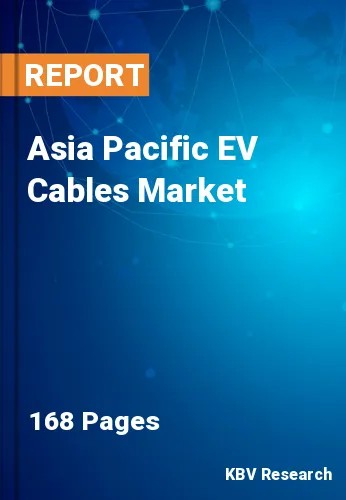The Asia Pacific EV Cables Market would witness market growth of 15.9% CAGR during the forecast period (2023-2030).
The adoption of coiled charging cables and DC charging cables, along with the development of rapid charging technologies, are now driving the demand for EV charging cables. The market has grown due to factors like the expansion of EV use. Additionally, government concerns about lowering carbon footprints drive the demand for EV charging cables.
Increased public awareness of the benefits of using electric vehicles could increase their utilization due to the stricter enforcement of environmental protection laws and the negative effects of GHG emissions on human health and the ecosystem. Strict building regulations requiring energy efficiency would help the market, as will the offer of greater discounts from electricity suppliers during off-peak hours. Continuous technological improvements in EV charging infrastructure and appropriate governmental initiatives like subsidy and incentive programs would significantly increase the EV sector.
With respect to EV manufacturing, the epicenters of industry growth in the region will be in Japan and South Korea in the coming years. Governments in these nations provide EV makers and buyers with financial and regulatory support, promoting EV charging station growth. In the Asia Pacific region, initiatives are being made to encourage regional integration and standardization of EV charging infrastructure. The deployment of EV charging infrastructure is growing in urban areas since it is considered to be a crucial component of smart city development plans. Thus, the regional governments' numerous initiatives to enhance the number of public charging stations will fuel the expansion of this market.
The China market dominated the Asia Pacific EV Cables Market by Country in 2022, and would continue to be a dominant market till 2030; thereby, achieving a market value of $2.8 billion by 2030. The Japan market is estimated to grow at a CAGR of 15.1% during (2023 - 2030). Additionally, The Taiwan market would exhibit a CAGR of 16.9% during (2023 - 2030).
Based on Shielding Type, the market is segmented into Copper, Aluminium, and Others. Based on Application, the market is segmented into Charging Management, Engine & Powertrain, Battery & Battery Management, Power Electronics, and Others. Based on Voltage, the market is segmented into High, Medium, Low, and Very High. Based on Component, the market is segmented into Wires, Connectors/Terminals, and Fuse & Others. Based on EV Type, the market is segmented into BEV, HEV, and PHEV & Others. Based on Insulation Material, the market is segmented into Thermoplastic Elastomer, Silicon Rubber Insulation, Fluoro Polymers, and Others. Based on countries, the market is segmented into China, Japan, India, South Korea, Singapore, Taiwan, and Rest of Asia Pacific.
Free Valuable Insights: The Worldwide EV Cables Market is Projected to reach USD 23.1 Billion by 2030, at a CAGR of 15.7%
The market research report covers the analysis of key stake holders of the market. Key companies profiled in the report include HUBER+SUHNER AG, TE Connectivity Ltd., Leoni AG, Aptiv PLC, Nexans S.A., Sumitomo Electric Industries, Ltd., Elkem ASA (Bluestar Elkem International Co., Ltd. S.A.), Sinbon Electronics Co., Ltd., Coroplast Fritz Müller GmbH & Co. KG, and Philatron Wire & Cable
By Shielding Type
By Application
By Voltage
By Component
By EV Type
By Insulation Material
By Country
Our team of dedicated experts can provide you with attractive expansion opportunities for your business.

